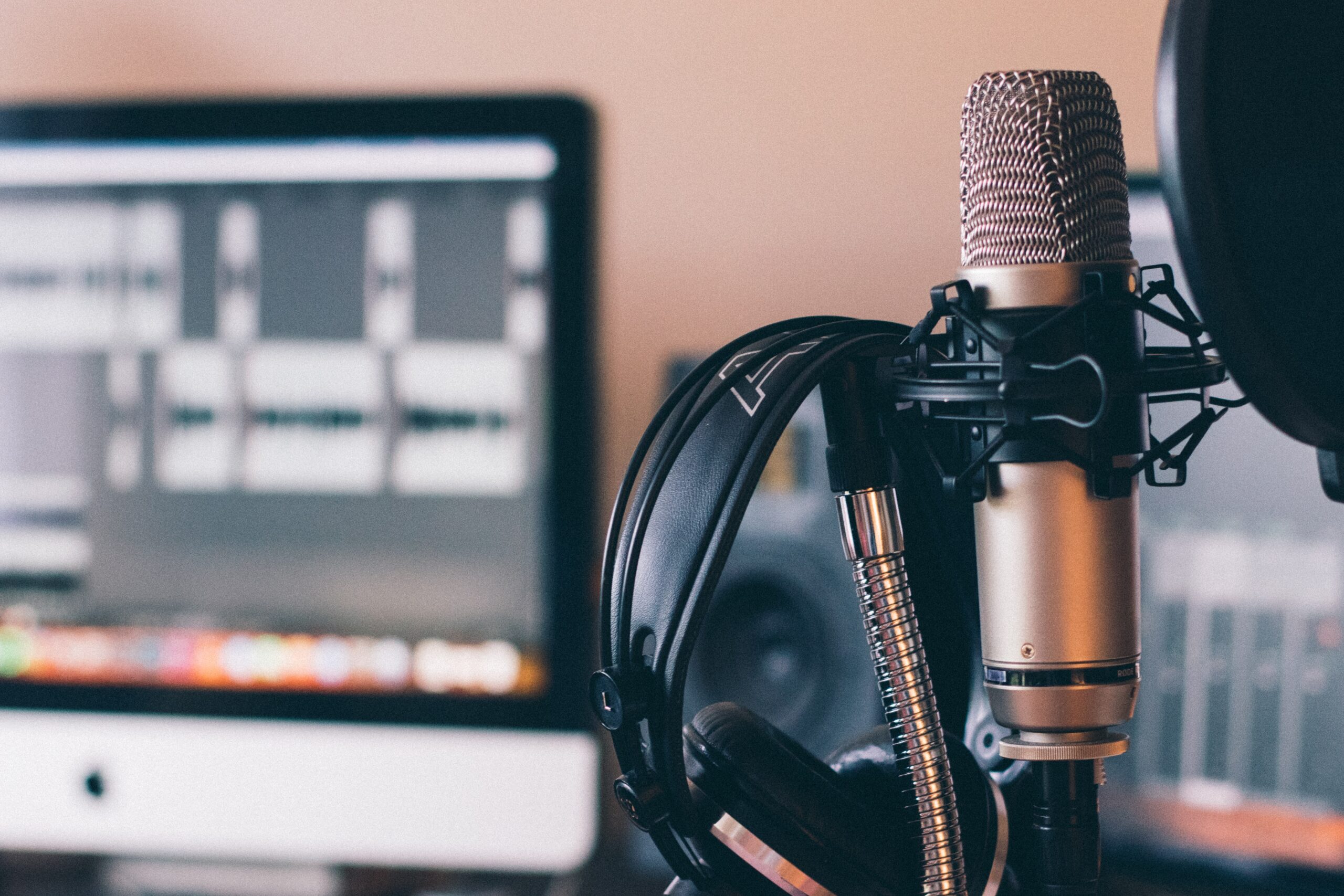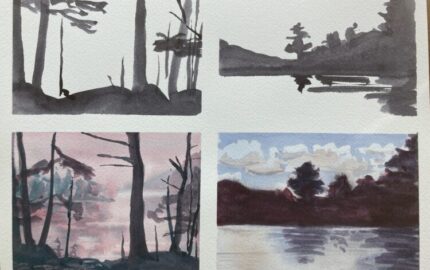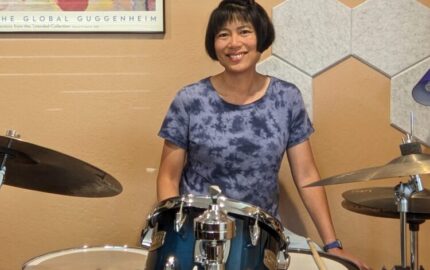EDITOR’S NOTE: This is the table-setter to a series of posts in the coming week that reprise the earlier Storyboard series “Audio Danger,” which include interviews with top narrative podcasters on their craft and the status of the form.
As 2023 dawned, it occurred to me that a decade has passed since I became consumed by a format of audio storytelling that I call “narrative podcasts.” To avoid confusion, I’ll define this term: They are original, non-fiction, serialized and generally narrated through the arc of a classic story. More simply, they are great audio storytelling.
I wish it didn’t take a mouthful of adjectives to describe them.

I learned radio in 1999 at CBC (Canadian Broadcasting Corp.), but then worked in other media formats for a decade. In 2013, I decided to return to audio, adapting my radio lessons to conform to the newer formats. My efforts were cute and honest, even if they make me wince to listen now.
When “Serial” was released in 2014, I found the format both stunning and efficient. Instead of multiple stories, it carried listeners through one story over 12 episodes; it was the first podcast to read 5 million downloads and the first to win a Peabody Award, launching, according to many, the podcast craze.
My attempt to make more efficient audio stories is how I steered into narrative podcasting. Maybe if I followed one story, instead of multiple stories told in a traditional three-act structure, I could produce a narrative on an extended, and thus more manageable, schedule. So in 2016, I began reporting “This Is Our Time,” a story about the first all-female, all-scientist expedition to Antarctica. I imagined the story would be so evident that the format would present itself and speed up my usual belabored production schedule.
The reality proved to be much different; I spent the next five years following this story, which eventually took me to Antarctica. The learning curve was steep. Five years and 13 episodes later, I can confirm it’s not the efficient approach I imagined.
But I had found my place.
From Orson Welles to Ira Glass
As popular as podcasting has become, a shared sense of what the word means remains elusive. Longform radio formats, including radio documentaries, personal essay formats and even audio books, have been around for decades, especially on public radio. Career radio folks can get annoyed when new-age “podcasters” claim that they invented audio storytelling; it’s akin to a Gen Z grandchild boasting about the this new thing they’ve discovered, like canning or knitting or sourdough breadmaking.
But in the last decade things have shifted. And out of this shift, a new storytelling format, a presentational genre, the narrative podcast, is being created.
While not all would agree, I believe that the podcasting of today shares an audio lineage that goes back to 1938 and the airing of Orson Welles’ “War of the Worlds.” But the spectrum of work we now commonly call podcasting began in the early 2000s, thanks to the alchemy of digital technology and distribution with a cultural appetite for storytelling. Many early podcasts were classic Q&As. Then came programs, like “This American Life” and “RadioLab.” But groundbreaking as they seemed, they were still single-episode stories told within an hour.
Until “Serial.” It was the first spin-off produced by “This American Life” and upended our existing understanding of audio storytelling.
Yet despite the meteoric growth of the podcasting industry and the recent flood of celebrities into this landscape, the creative beating heart inside the podcasting industry is still hard to define. The term “podcasting” has become generic, devolving into a game of semantics. There’s still no common cultural understanding of what narrative podcasts are and why they are different from other story structures. And an even more basic challenge: What I call “narrative podcasting” doesn’t really have a name that has stuck; it is still the baby called “Baby” inside a new and growing industry.
“Serial” eventually played out over three seasons. It now has been downloaded more than 300 million times; that’s basically one download for every person who has the aptitude to hit “subscribe” on a device in America.
How can we compare this to other storytelling phenomena that have earned widespread recognition? One example might be the indie film; it exists inside but also alongside, the Hollywood studio system. There’s no confusing an indie film with a Marvel hero tale or an A-List romp like Netflix’ “Glass Onion” or an action blockbuster like “Top Gun.” When you say you saw an indie film, you have a sense of what that is and what it isn’t. You don’t have to be a film critic to understand this difference.
Or how about pickleball? It has become its own sport among the plethora of racquet sports. It’s not tennis and it’s not badminton but there’s a net and a racquet and ball involved. It has exploded in popularity, and has gradually begun to convince local gyms and community centers to lower their nets, and players in team t-shirts now throng the courts.
When I imagine the future of narrative podcasts. I imagine an industry that will one day have the same cultural acceptance understanding that indie films have within the wider landscape of film. Indie films have captured our hearts and defied the odds. They are underdogs in an industry where money and prestige are the dominant forces. Team t-shirts might help, too.
To better make my point, consider “The Blair Witch Project.” It debuted at Sundance Film Festival in 1999 to a stunned audience. What was that?! A documentary? A farce? The producers had exploited a thin line between fact and fiction, documentary and low-budget independent film to allow a great (horrific) mystery to unfold. It became a viral sensation that grew into a cultural phenomenon. It eventually grossed $250 million in box office, which gives it a rank of 13th in the highest grossing indie films. (Given that the original budget was under $60,000, it stands out in front in the measure of bang for buck.)
When the general public got access to “Blair Witch” in mainstream theaters, no one questioned the low-fi footage that makes you want to vomit in your chair; that sense of vertigo the whole point. And that style helped launch the sub-genre of found footage in the horror films. The viewing public wasn’t confused; this was an indie film, so the production made sense. Fans didn’t have to wonder what they were seeing; they just got to spend some time lost in the woods with that creepy feeling that something bad was just about to happen.
A graphic (comic-book style) guide
When I get frustrated by all those adjectives I use to explain narrative podcasting, I remember a passage from “Out On The Wire,” Jessica Abel’s graphic tour through the storytelling technique of narrative podcasting.
To research her book, Abel sat in on story meetings and edits of a range of programs. She interviewed the people whom she calls “the new masters of radio,” including Ira Glass and his colleagues at the original “This American Life” (including Julie Snyder, on of the producers on Season 1 of “Serial”); Glynn Washington and crew at “Snap Judgement,” Jad Abumrad and others at “RadioLab,” Rob Rosenthal, then part of the Transom Story Workshop.
The style of “Out On The Wire” may seem iconoclastic to narrative podcasting: It’s graphic nonfiction (or as Abel notes on her website “that’s comics to the layperson…” because apparently it, too, is finding its place in journalism). At the same time, it’s a how-to guide and concise living history of the industry. Abel is an artist, creative coach and associate professor at the Pennsylvania Academy of Fine Arts (PAFA). Her ability to work intra-industry and also understand the concept behind the forms borders on the prophetic.
Abel recognized the terminology challenge that confronts podcasts. On Page 10 of her book, there’s a frame of her looking directly at the reader. The speech bubble reports her thought:
I understood the literal process of making a radio story, but that only took me so far. There is so much more to know about what elements go into a wonderful radio story, how great producers approach the basic narrative questions.
In that sense, my search for more insight into storytelling has taken me full circle, right back to narrative nonfiction audio stories.
… uh, public radio-based creative nonfiction narratives.
Wait, um … fact-based radio (and podcast) … no, audio storytelling
Ugh. How do I still not know what to call this stuff???
And with that, the next frames show her walking back to the “This American Life” offices, where she gets ready to pose the question to Ira Glass. The following quotes are from a series of frames inspired by that conversation.
Ira. Do you have a name for this kind of radio? asks Jessica.
No. No, no. That would really help, wouldn’t it? says Ira, who then continues:
What is this kind of radio?
I mean, it’s story. We’re makin’ stories.Ha, ha.
That’s what we call ‘em
We’re making stories. But like, you know, that’s what the BBC calls the report coming in from Dubai on the market fluctuation.
I mean, sometimes we’ll say the word “narrative” but that’s just like adding extra syllables – and brightness – to it.
It’s narrative journalism, is what it is. I mean… we don’t…
I think you might be stuck with “narrative journalism” if you want to call it something.
I just want to make something that is compelling to me.
And I wish there was a not-pretentious way to just say “compelling stories” … you know what I mean? Like …
An overdue name of its own
What indie films and pickleball have in common are their unconfused and unconfusing names. Each is defined by terminology that brings taxonomy along with it.
This is exactly what narrative podcasting needs. In order to speak about it, to rave about it, to talk about it, the first step is to actually call it the same thing, again and again, until it sticks.
So I am determined to use the term “narrative podcast” as often as I can. I will plaster my social media channels with #narrativepodcast to help it to enter the SEO landscape. I will write it in a way that builds a body of critique so there is a core of work to compare and discuss. I will move away from “Baby” and call it by its given and singular name.
Narrative storytelling has earned a place at the adults table for story formats, including podcasts. So why not put a nametag beside the plate?
* * *
Samantha Hodder is an audio producer based in Toronto and writer of Bingeworthy, a newsletter all about narrative podcasts that are just that good.



